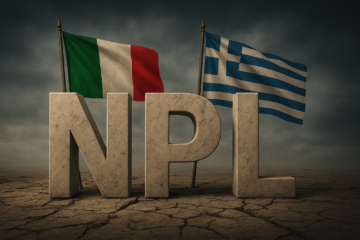Omnicom Group Inc. Market Cap (as of 16/05/14) $17.35bn
Publicis Groupe SA Market Cap (as of 16/05/14): $17.28bn
On 9 May, 2014 the $35bn merger of equals between the New York-based Omnicom Group Inc. and the Paris-based Publicis Groupe, the world’s second and third biggest advertising companies respectively, was called off as the challenges in forming the world’s advertising giant proved to be too immense for the partners.
The two firms agreed to merge on 28 July, 2013 in order to create the world’s largest advertising agency with almost $23bn in revenue and half of the industry’s networks under one roof as Omnicom works for global marketers such as McDonald’s Corp., PepsiCo Inc., Mercedes and AT&T while Publicis’ clients list includes international giants such as L’Oréal SA, P&G, Toyota and Verizon.
From the very beginning difficulties were foreseen for a merger of this magnitude, most importantly different corporate cultures and management philosophies. While Wren, CEO of Omnicom, explained that “there was no one factor” responsible for the collapse, Lévy, CEO of Publicis, indicated the deal-breaker was Omnicom’s insistence on keeping its executives in the management team of the new company. Both companies have also faced tax and regulatory barriers whereas another hurdle was the potential client conflicts, as both of the ad firms work for major rivals. The split was approved by the management of both companies, which also agreed to no termination fee after having lost billions in business pitches as a result of the strong uncertainty of completion.
Had the merger of Omnicom Group and Publicis Groupe actually gone through, it would have been the biggest agency deal in history, but now, with the merger off, the companies have surrendered their potentially dominant position to current leader WPP. However, according to Brian Wieser, a senior analyst at Pivotal Research, consolidation in the industry was still on the table and other deals could happen but among smaller agencies such as Interpublic Group or Havas.
Omnicom shares fell 2.7% to $64.40 after the news about the failed deal spread, pushing the stock below the price where it traded before the merger was announced last July ($65.11), reflecting a widespread disappointment after months of negotiations. On the contrary, shares of rivals WPP and Interpublic Group of Cos. have climbed 8.7% and 10.0%, respectively, since Publicis and Omnicom announced their proposed merger last July.
The deal was also peculiar on the financial advisory side: no top tier investment banks were hired as advisors and the parties appointed two boutiques (Moelis & Co. for Omnicom and Rothschild for Publicis) whose designation was favourite by the boutique-friendly nature of the deal, characterised by the lack of a big financing component as a result of the stock-based nature of the transaction. The merger collapse deprived the boutiques of substantial success fees as well as of a remarkable contribution in league tables.
Omnicom-Publicis deal is just the latest example of the complexity entailed in making a merger working. Over the last 20 years the idea of exploiting economies of scale and creating synergies through M&A activity gained popularity among CEOs. In particular, this practice has been deemed particularly important following the recent financial crisis as companies have been looking for new sources of value in a stuck economic environment. Indeed, thanks to positive macroeconomic forecasts and equity markets at record-highs, global M&A activity (announced deals) reached $2.91tr in FY2013 and $804.5bn in Q1 2014, recording +9% and +23% on the same reference period of the previous year, respectively (Dealogic data).
Among the main reasons for two firms to combine into one entity the idea of synergies stands out, as the “2+2=5” effect creates lucrative incentives for mergers and acquisitions. Even though there are some examples of merger success, namely Heinz, Unilever and P&G, the reality departs from the popular opinion.
According to various research studies conducted on M&A activity in the United States, as much as 50% of such conducted projects resulted in failure while more than 80% of consolidated companies failed to reach desired results mostly as a consequence of overestimated synergies, which, in turn, arise from poor prior planning of the management and excessively optimistic forecasts. Indeed, a M&A process could be best explained as a notion of “marriage” where unification of two companies into one is a particular clash of personalities, cultures and values, and in the particular case of Publicis and Omnicom, the engagement has been particularly worrying as neither of the two advertising giants was willing to concede its power.
Therefore, the willingness of a firm to adapt to a particular culture and accept it as its own plays a pivotal role in the success of a M&A project: cultural similarity between two companies is a key element in the integration process, even though firms dedicate an insufficient amount of time and effort in understanding the cultural fit of the merger.
Firms’ CEOs become lured in M&A due to the fact that they seem easy to handle, especially with IB professionals’ help, but the hard part comes when the M&A process is completed and the new entity is expected to perform. Apart from the aforementioned issues related to business culture and synergies, the newly established firm can encounter many other complications such as negotiation mistakes, faulty implementation strategies due to the improper implementation approach as well as poor motivation of employees. In fact, human capital is strongly affected by a change in corporate culture and management approach, thus creating considerable costs for the company as the resistance (i.e. negative attitudes and tension towards the acquiring company) diminishes the probability of success of the M&A integration process.
In conclusion, even though significant attention has been given to M&A procedures, little has been done to fix the subsequent organization failures. As long as issues concerning cultural and organizational differences are not properly tackled, many deals are destined to follow Omnicom-Publicis merger outcome.
[edmc id=1753]Download as pdf[/edmc]



0 Comments